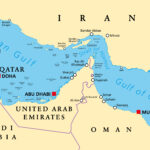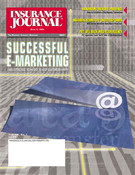Either through personal experience or observation, we all know that during the later half of 2000, Wall Street pummeled the value and image of Internet companies. The bloom was off the rose. Investors realized that most Internet companies were grossly overvalued.
By December, a clear message was delivered that a new set of rules applied for Internet-based companies: Make a profit, or at least display the potential for profitability in the near future (the “old economy” rules).
Internet-based insurance operations were not immune from the shakeout. Today they face a very uncertain future and must prove that their products and distribution system can make money for investors.
Similar to the experiences of other Internet-based businesses, some insurance products may lend themselves to direct consumer marketing while others may be best left to traditional distribution sources. While we may miss the Pets.com hand puppet, did it ever make any sense to sell a $10 bag of dog food with a $15 shipping charge?
Only insurance products that are easily understood by consumers and can be underwritten and quoted on a real-time basis, appear to lend themselves to direct business-to-consumer marketing. Personal auto, renters, term-life, and perhaps homeowners insurance products seem to hold the most promise. Consumers generally understand what is covered and excluded, and the Internet facilitates comparison-shopping.
So what about the more complex coverages? Business owners looking for commercial property, general liability, crime, workers’ comp, or inland marine coverages are less likely to abandon their insurance agent to go it alone on the web. The risk of significant gaps in coverage and the time burden of the “learning curve” are substantial deterrents.
That said, the Internet does hold great promise to make placements of these kinds for agents and brokers. A handful of Internet-based specialty markets have presented retail and wholesale brokers web-based processes to market and bind coverage for difficult risks that are exposed to unique perils. The web is proving that both significant speed and efficiencies can be realized by the producer and the underwriter.
Regardless of the insurance product being sold, direct company-to-policyholder or company-to-producer models share the same delivery requirements: instant gratification, personalized service, and ease-of-use. Internet models that do not deliver these characteristics are destined for failure.
The dot-com insurance business that promises online “completion,” but actually requires the applicant to call for additional information, is more likely to create frustration than satisfaction. Company-to-producer insurance sites run the same risk. Agents and brokers are unlikely to transact business with an organization that requires a two- or three-step process if they have the option to do business with an entity that can accomplish the same thing in one step.
While the best Internet sites offer speed and convenience, so far the web has not been able to duplicate the service and advice of a professional insurance agent.
The “bricks-and-clicks” model being delivered by Allstate.com or Progressive.com-which give the consumer the option to go it alone or contact an agent at any time during the process-is an obvious evolution for our industry. This model provides the ease-of-use factor offered by the web, combined with the comfort of having an agent in your living room. Time will dictate if this dual model, which requires resources to both make the web available and to have an agent ready to assist, can be operated at a profit.
While the Internet has become a core component of today’s business world, to date it has not shown that it can replace the traditional sales network of the insurance market. The challenge for the insurance industry will be to find those niche products that lend themselves to Internet processes and profitability.
Internet sites often receive only one chance at customer or producer satisfaction. Frustration, delay, or confusion can be the difference between success or failure.
John C. Graham is the Chief Executive Officer of International Catastrophe Insurance Managers, LLC (ICAT Managers). ICAT is a web-based MGA that specializes in writing commercial insurance for businesses in catastrophe-exposed regions throughout the United States. Throughout Graham’s career, he has worked with insurance organizations to provide them with counsel regarding their catastrophe exposures and to assist them in purchasing reinsurance coverages.
Topics Agencies
Was this article valuable?
Here are more articles you may enjoy.


 Three Insurers Reject Chevron’s $57 Million Claim for Iran Oil Seizure
Three Insurers Reject Chevron’s $57 Million Claim for Iran Oil Seizure  Update: Fannie Mae Guidelines Raise Concerns, Could Bar ACV Coverage for Homes
Update: Fannie Mae Guidelines Raise Concerns, Could Bar ACV Coverage for Homes  The Top 15 U.S. Metros with High Exposure to Wildfire Risk
The Top 15 U.S. Metros with High Exposure to Wildfire Risk  Nuclear Verdicts Surge to $14.5 Billion in 2023 – Report
Nuclear Verdicts Surge to $14.5 Billion in 2023 – Report 


